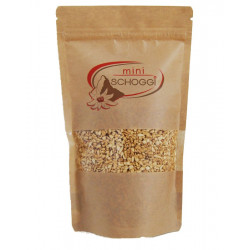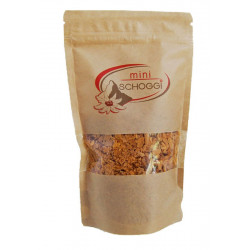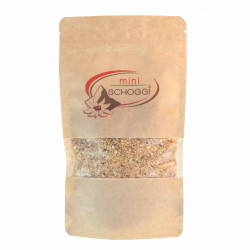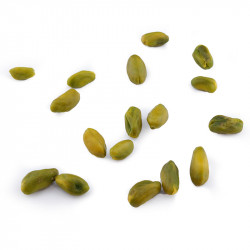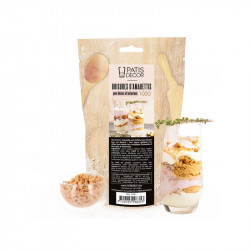-
MenuBack
-
Online Store
-
-
-
-
-
Leer
- Couverture
- Temperature control units
- Aids for chocolate
- Chocolate molds
- Praline fillings
- Chocolate ingredients
- Praline hollow body
- Chocolate colors
- Chocolate tattoos
- Chocolate packaging
- Bean to Bar
- Material for cutting chocolates
- Batons with Kirsch
- Airbrush for chocolate
- High Heels Accessories
- Textured films for chocolate
- Chocolate fountain & fondue
-
-
-
-
-
Kuchen & Torten
- Cakes Fillings & Ingredients
- Fondant & Marzipan
- Cakes tools
- Cake rings
- Silicone molds
- Baking pans for cakes
- Cake stand
- Cakes packaging
- Airbrush for cakes
- Sugar flowers accessories
- Cake Topper & Wedding Figurines
- Cakes dummies
-
-
-
-
-
-
-
-
-
-
-
-
-
-
-
-
-
-
-
-
-
-
-
Füllungen
- Baking chocolate
- Glucose & Sorbitol
- Cocoa beans
- Cocoa nibs
- Monin syrup
- Champagne & Alcohols
- Freeze dried fruits
- Cake & cake glaze
- Flours & baking ingredients
- Chocolate coating & chocolate
- Milk powder
- Granules
- Nuts & Nougat
- Fruit puree
- Creams & Fillings
- Egg yolk & egg white
- Fruit powder
- Special ingredients
- Fondant & Flower Paste
-
-
-
-
-
-
-
- Punching, cutting & embossing
- Mixing bowls & whisks
- Chocolate material
- Thermometer & Burner
- Gloves & Protective Material
- Smoothing & Modeling
- Roll out bar
- Dough scraper & horn
- (Flour) sieves
- Cake turntable
- Spatula & Spatula
- Silicone embossing molds
- Insert strips & cake slices
- Brushes & Tweezers
- Measuring cup
-
-
-
-
-
-
-
-
-
Ausstechformen
-
-
-
-
-
-
-
-
-
Courses
-
-
kurse
- Current courses
- Praline courses
- Chocolate courses
- Chocolate kiss course
- Macaron courses
- Cake courses
- Baking courses
- Patisserie courses
- Ice cream course
- Guetzli, Cookie & Confectionery Courses
- Bread courses
- Pasta courses
- Apéro course
- Cupcakes courses
- Éclair course
- Courses in Zurich - Adliswil
- Children's courses
-
-
- Team Events
- Hen Night
- Retail Store
-
About Us
-
-
-
DirectionsDownload relevant PDF now.
-
-
-
Recipes blog
-
-
Recipes Blog
-
-
-
Shipping and Payment
-
-
Versand/Zahlung/Impressum
-
-
- Online Shop
-
- Novelties
- Sale
- Chocolate and chocolates
- Couverture
- Temperature control units
- Aids for chocolate
- Chocolate molds
- Praline fillings
- Chocolate ingredients
- Praline hollow body
- Chocolate colors
- Chocolate tattoos
- Chocolate packaging
- Bean to Bar
- Material for cutting chocolates
- Batons with Kirsch
- Airbrush for chocolate
- High Heels Accessories
- Textured films for chocolate
- Chocolate fountain & fondue
- Couverture
- Gifts Cards
- Stencils & Stencils
- Cakes & Pies
- Ice cream
- Bread
- Macarons
- Hearty
- Recipe booklets & books
- Cupcakes
- Dessert
- Cake Pops
- Edible decorations
- Fillings & Ingredients
- Glucose & Sorbitol
- Cocoa beans
- Baking chocolate
- Cocoa nibs
- Monin syrup
- Champagne & Alcohols
- Freeze dried fruits
- Cake & cake glaze
- Milk powder
- Flours & baking ingredients
- Chocolate coating & chocolate
- Granules
- Nuts & Nougat
- Fruit puree
- Creams & Fillings
- Egg yolk & egg white
- Fruit powder
- Special ingredients
- Fondant & Flower Paste
- Food Colors
- Auxiliary means
- Spouts & piping bags
- Fondant, marzipan, flower paste
- Bakeware
- Aprons & Potholders
- Cookie cutters
- Season
- Candles
- Party accessories
- Tableware
Nuts
There are 9 products.
Active filters
Nuts
There are many different types of nuts, including:
1. Almonds: They are rich in vitamin E and unsaturated fatty acids.
2. Hazelnuts: These nuts are rich in fiber, vitamin E and B vitamins.
3. Walnuts: They contain omega-3 fatty acids, antioxidants and various minerals.
4. Cashews: These nuts are rich in magnesium and vitamins like vitamin K and B6.
5. Macadamia nuts: They are rich in unsaturated fatty acids and also contain vitamins A and E.
6. Pistachios: These nuts are rich in fiber, protein and antioxidants.
7. Brazil nuts: They are a good source of selenium and also contain vitamins, minerals and antioxidants.
8. Pecans: These nuts are rich in unsaturated fats, fiber and vitamin E.
9. Pine nuts: They contain healthy fats and are rich in vitamins E and K.
10. Peanuts (botanically legumes): They are rich in protein, fiber, vitamin E and B vitamins.
There are many more types of nuts, but these are some of the most popular and well-known.
Almonds
Almonds are small, oval nuts that have a hard shell. They are often eaten as a snack or used for cooking and baking. Here is some important information about almonds:
1. Nutritional value: Almonds are rich in good fats, fiber, vitamin E, B vitamins, minerals such as magnesium, phosphorus and calcium, and vegetable proteins.
2. Health benefits: Almonds can help reduce the risk of heart disease, stabilize blood sugar levels, improve brain function, aid weight loss, aid digestion and support bone health.
3. Allergies: Some people have allergies to almonds. Symptoms of almond allergy may include skin reactions, nausea, vomiting, difficulty breathing or anaphylaxis. If you have a known allergy, almonds should be avoided.
4. Almond oil: Almonds can be used to make almond oil, which is often used in the cosmetics industry for skin and hair care products.
5. Almond milk: Almonds can also be used to make almond milk, a plant-based alternative to animal milk. Almond milk is lactose-free, gluten-free and contains fewer calories than cow's milk.
6. Season and storage: Almonds are available year-round. They should be stored in an airtight container or in the refrigerator to maintain their freshness and quality.
It is important to note that almonds can be harmful to some people, especially those with nut allergies or certain conditions such as kidney stones or bile problems. It is advisable to consult a doctor before eating almonds if you have any concerns.
Almond flour
Almond flour is a nutrient-rich flour made from ground almonds. It has a high content of protein, fiber, vitamins and minerals such as vitamin E, magnesium and calcium.
It is naturally gluten-free, which makes it a good alternative for people with celiac disease or gluten intolerance. Almond flour also has a low glycemic index, which means it doesn't raise blood sugar levels as much as other flours.
Almond flour can be used as a substitute for wheat flour in many recipes, although it may require some adjustments. Because of its high protein content, it can cause doughs to become heavier and denser. It is often recommended to mix almond flour with other types of flour for a better result.
It is important to note that almond flour has a lower density compared to wheat flour. This means that more liquid may need to be added during baking to achieve the desired consistency.
Almond flour can also be used in ketogenic and paleo diets, as it is low in carbohydrates but still contains nutrients and fiber.
It is advisable to store almond flour in an airtight container in the refrigerator to preserve its shelf life and quality for as long as possible.
Although almond flour is healthy, it is important to consume it in bulk as it is high in calories. A serving of 28 grams of almond flour contains about 160 calories.
What is the difference of almond flour and ground white almonds?
The main difference between almond flour and ground white almonds is in texture and processing.
Almond flour is made from almonds that are first blanched to remove the skin and then ground into fine flour. The result is a very fine, light and powdery flour that has a smooth texture and is well suited for baked goods.
Ground white almonds, on the other hand, are less processed. They are made from whole almonds that are simply ground to a coarse consistency. The result is coarser almond particles that are still somewhat oily. Ground almonds work well in cakes, cereals, or as a topping for desserts.
In terms of nutritional content, almond flour and ground white almonds are pretty similar. Both contain a good amount of protein, fiber, vitamin E and healthy fats.
It's important to note that almond flour is often used as a gluten-free alternative to wheat flour, while ground white almonds are more commonly used as an ingredient or topping in recipes. So which product you choose depends on the consistency you want and the intended use.
Why are there part deoiled almond flours?
There are partially deoiled almond flours because the deoiling process reduces the nutrients and flavor of the almonds. Partial de-oiling allows some of the fat to be removed while retaining most of the nutrients. This results in a flour with less fat and calories that still has good flavor and high nutritional value. Partially deoiled almond flour can therefore be a healthier alternative, especially for people who want to watch their fat or calorie intake. Please note that partially deoiled almond flour is not suitable for making macarons. If you are looking for a good almond flour for macarons, then you will find in the online store of miniSchoggi an almond flour that is perfectly suitable for the production of macarons.
Pistachios
Pistachios are a pome fruit belonging to the Anacardiaceae family. The seeds of the pistachio fruit are edible and are called pistachios. They are green or beige in color and have a hard shell that can be easily opened to expose the edible kernel. Pistachios are known for their distinctive flavor and rich nutritional composition. They contain healthy fats, fiber, protein, vitamins and minerals such as vitamin B6, vitamin E, iron, phosphorus and magnesium. Pistachios are often eaten raw or roasted as a snack, or they are used in various dishes such as ice cream, pastries and salads.
Whole shelled pistachios are hard to find in a store, often you only find the chopped pistachios. But in the bakery store of miniSchoggi in Adliswil you can find whole pistachios, which are great for your chocolates, Guetzli, chocolate bar or other pastries. Browse now in the online store of miniSchoggi and buy pistachios.
Hazelnuts
1. origin and distribution: Hazelnuts come from the hazel, a bush or tree of the birch family (Betulaceae). They are common in Europe, Asia and North America.
2. Nutrients: Hazelnuts are rich in nutrients such as vitamin E, magnesium, iron, calcium and fiber. They also contain healthy fats, proteins and antioxidants.
3. Health Benefits: Eating hazelnuts can reduce the risk of heart disease, lower blood pressure and improve blood sugar control. They can also help lower cholesterol and control weight.
4. Allergies: Hazelnuts are among the eight most common food allergens. People with hazelnut allergies may develop allergic reactions such as rash, itching, swelling or difficulty breathing.
5. Uses: Hazelnuts can be eaten raw, but they are also used in many foods such as chocolate, cookies, cereals and pastries. Hazelnut oil is also used for cooking and in the cosmetics industry.
6. Storage: Hazelnuts should be stored in a cool, dry place to ensure their shelf life. They can also be stored in the refrigerator or freezer to maintain their freshness.
7. Harvesting methods: Hazelnuts are usually harvested in the fall. They can be harvested by hand or with mechanized harvesters. Some traditional methods include shaking the trees or collecting the nuts as they fall to the ground.
8. Varieties: There are several varieties of hazelnuts, including the Turkish hazelnut, the Giant hazelnut, and the Corylus avellana variety.
9. Uses in the Kitchen: Hazelnuts are great as a snack, but can also be used in a variety of dishes. They can be chopped or roasted and are a popular ingredient in baked goods, salads, desserts and chocolates.
Walnuts & Tree Nuts
Walnuts are a type of nuts that come from walnut trees. They have a hard shell that must be opened to get to the edible inner part. Here are some important information about walnuts:
1. Health Benefits: Walnuts are rich in omega-3 fatty acids, fiber, vitamins and minerals. They can help promote heart health, lower cholesterol, support brain function and improve digestion.
2. Nutrients: Walnuts contain protein, healthy fats, fiber, vitamin E, magnesium and antioxidants. A handful of walnuts contains about 185 calories.
3. Storage: Walnuts should be stored in an airtight container in a cool, dark place to preserve flavor and quality. Alternatively, they can be stored in the refrigerator.
4. Uses: Walnuts can be eaten raw or used in a variety of dishes, such as salads, breads, cakes and desserts. They can also be pressed into oil, which is versatile in cooking.
5. Allergies: Some people may be allergic to walnuts. It is important to be careful and watch for allergic reactions when eating walnuts.
6. Harvest Season: Walnuts are usually harvested in the fall and are ripe during this time.
7. Side Effects: Some people may experience stomach upset or digestive problems when eating too many walnuts. It is important to eat them in moderation.
8. Different varieties: There are different varieties of walnuts, such as English walnuts and black walnuts, which may differ in size, flavor, and appearance.
9. Origin: Walnut trees originated in parts of Europe, Asia, and North America.
10. Recipe ideas: There are many delicious recipes that can use walnuts, such as walnut pesto. On the recipe blog of miniSchoggi you will find a variety of delicious recipes, such as walnut chocolates.

